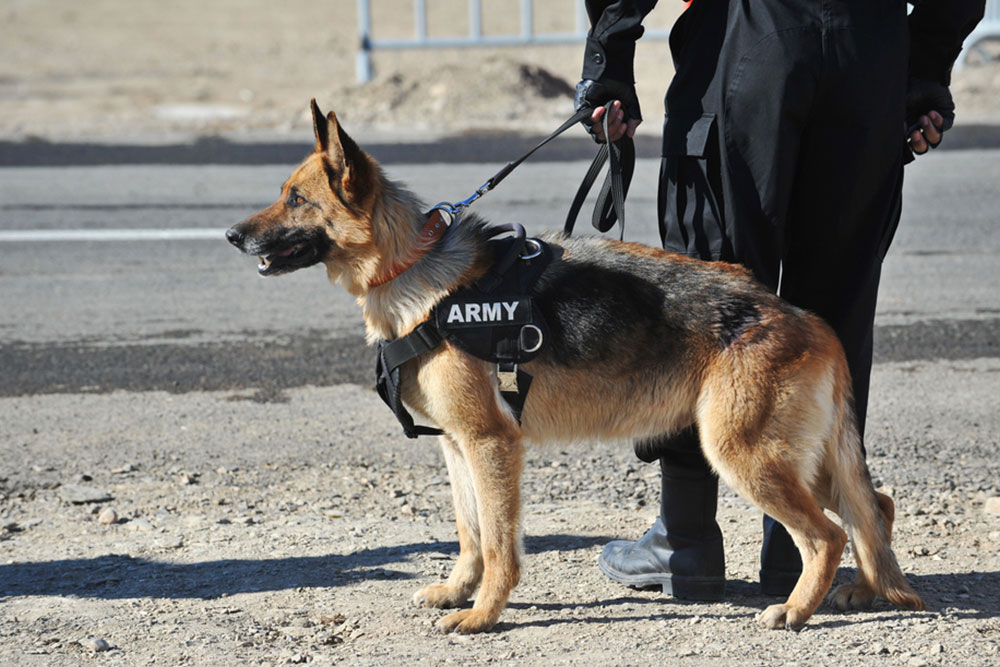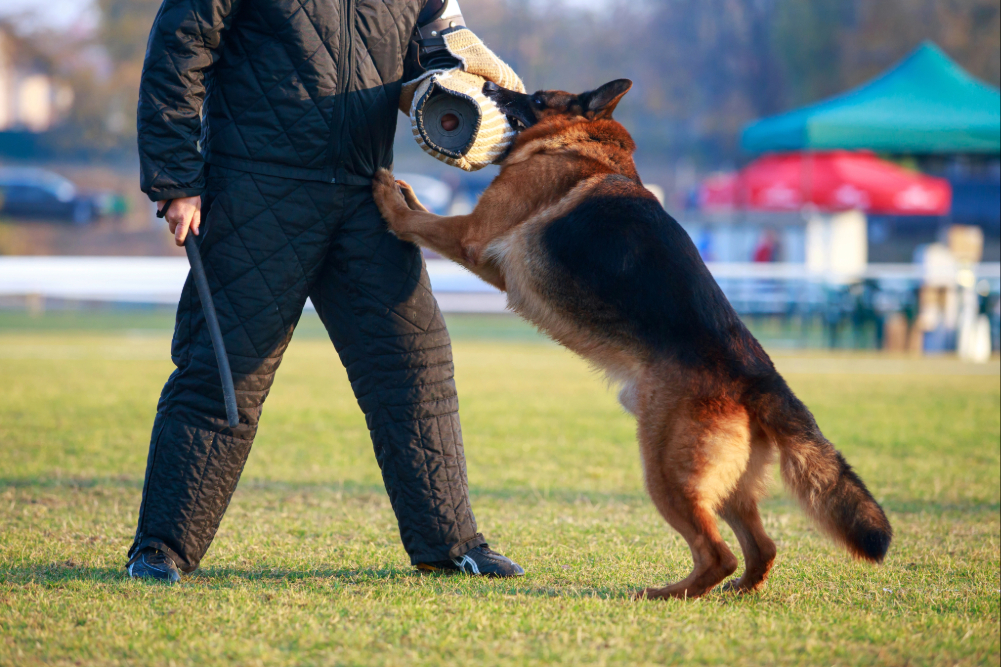
Separation anxiety is one of the most common behavioral issues in dogs, affecting their emotional well-being and causing distress for both pets and owners. While there are various methods to help manage this condition, board and train separation anxiety programs have proven to be highly effective.
These specialized programs offer structured training in a controlled environment, allowing trainers to work directly with your dog to address the root causes of anxiety. If you're considering board and train separation anxiety programs, it's essential to understand how they work and how they can help alleviate your dog's anxiety.
Understanding Separation Anxiety in Dogs
Dogs with separation anxiety often display destructive behaviors like excessive barking, chewing, or housebreaking issues when left alone. Separation anxiety occurs when a dog experiences extreme stress and panic when separated from their owner or caretaker. This condition can manifest in a variety of ways, including howling, pacing, digging, or attempting to escape.
The anxiety is often triggered by the absence of the owner, leading to disruptive and destructive behavior. This emotional response can lead to further behavioral issues, creating a cycle that's hard to break without professional intervention.
One of the primary reasons dogs develop separation anxiety is a lack of early socialization and exposure to being alone. Some dogs may develop anxiety due to past trauma, such as being abandoned or surrendered to a shelter. Others might struggle with a sudden change in routine, like a move to a new home or a change in the family’s schedule.
Regardless of the cause, separation anxiety is a condition that requires attention, patience, and, most often, professional help.
Traditional at-home training may not provide the consistency or controlled environment necessary to break these habits. A board and train dog program provides the perfect solution, offering a dedicated, hands-on approach to managing separation anxiety. By enrolling your dog in one of these programs, you’re setting them up for success, both now and in the future.
How Board and Train Programs Help with Separation Anxiety
Board and train programs offer an excellent solution for dogs suffering from separation anxiety. These programs provide a structured, distraction-free environment where your dog can focus solely on their training. With the help of professional trainers, dogs can learn to cope with being alone in a controlled, safe setting.
By working with your dog in a board and train environment, trainers can tailor the program to your dog's specific needs, allowing for more effective treatment. Another main advantage of board and training is the consistency it offers.
While at home, it can be difficult to maintain a consistent training routine, especially if you’re juggling work and other responsibilities.
A board and train dog program ensures that your dog receives continuous attention and training, helping them progress faster. The trainers in these programs are skilled in managing separation anxiety and can implement specific techniques to help your dog build positive associations with being alone.
Top Advantages of Board and Train Programs for Dogs with Separation Anxiety
The primary benefit of enrolling your dog in a board and train separation anxiety program is the focused attention they receive. Dogs in these programs are not only trained but are also cared for and observed throughout the day, which allows trainers to address issues as they arise. This intensive approach enables dogs to learn coping mechanisms and gain the confidence they need to handle being alone.
Additionally, board and train programs help dogs develop better general behavior, such as improved impulse control and obedience. These skills are important for dogs suffering from separation anxiety, as they can learn to stay calm and composed even in stressful situations. With the right guidance, your dog will be able to handle triggers associated with their anxiety, making it easier for both you and your pet.
Another advantage of board and train programs is the opportunity for desensitization. During the training process, your dog will gradually be exposed to short periods of separation, allowing them to adapt to being alone without becoming overwhelmed. This gradual approach can significantly reduce the severity of separation anxiety over time.
The controlled environment of a board and train dog program makes it possible to safely expose your dog to these experiences without overwhelming them. The trainers can closely monitor your dog’s reactions, adjusting the separation times as needed to ensure gradual progress. This careful and deliberate desensitization helps build a stronger foundation for your dog to handle future separations with ease.
What Happens During a Board and Train Program for Separation Anxiety?
When enrolling your dog in a board and train program, it's essential to know what to expect. Initially, trainers will conduct a thorough assessment of your dog to identify their specific triggers and anxiety levels. Based on this evaluation, the trainer will design a tailored training plan to address your dog’s unique needs.
Training sessions typically include a combination of behavior modification techniques, such as crate training, positive reinforcement, and counter-conditioning. These methods help to change your dog’s emotional response to being alone, replacing anxiety with a sense of calm and security. Your dog will also learn alternative behaviors, such as staying in a designated area or playing with toys to distract them from their anxiety.
Throughout the program, trainers will provide regular updates on your dog’s progress and adjust the training plan as necessary. You’ll also receive tips on how to continue your dog’s training at home once they’ve completed the board and train program. This ongoing support is one of the key benefits of board and train programs, as it helps ensure lasting success.
Choosing the Right Board and Train Program for Your Dog
When selecting a board and train program for your dog, it’s essential to choose a facility that specializes in separation anxiety and behavior modification. Look for trainers who have experience working with dogs that have anxiety disorders and who use positive, force-free methods. Ask about their training techniques and the structure of the program to ensure it aligns with your goals for your dog.
Additionally, make sure the program offers personalized care and attention for each dog. The best board and train programs limit the number of dogs they take on at a time, allowing for more individualized training. This level of attention is essential when working with dogs that have separation anxiety, as each dog may require different approaches to address their specific issues.
Another important factor is the facility’s environment. Ideally, the space should be quiet, calm, and conducive to focusing on behavior modification. An overly busy or chaotic environment may exacerbate your dog's anxiety, making the training process more difficult. A peaceful setting allows your dog to relax, focus, and fully benefit from the training, enhancing the likelihood of success.
It’s also important to consider aftercare services. Many board and train dog programs offer follow-up lessons and ongoing support after your dog completes their training. This is an essential aspect of the process, as it helps reinforce the training and ensures that your dog continues to make progress once they’re back at home.
Owners' Part in Supporting Dogs with Separation Anxiety
While board and train programs provide essential support in managing separation anxiety, owners also play a key role in their dog’s recovery. It’s essential to follow through with the techniques taught by the trainer and remain consistent in your training at home.
Dogs with separation anxiety need structure, so creating a predictable routine at home is essential for reinforcing the lessons they learned during their training.
Owners should also work on building their dog’s confidence by encouraging independent play and reinforcing positive behavior through praise and rewards.
Rather than focusing solely on preventing anxiety-inducing situations, help your dog build a sense of security and autonomy through consistent reinforcement of calm and independent behaviors. This can empower your dog to feel less dependent on your presence, thus reducing anxiety over time.
In addition to continuing training, owners should work on reducing the triggers that may worsen their dog’s anxiety. For example, consider creating a safe space for your dog when you’re away, filled with comforting items like toys, bedding, or items with your scent. Gradually increasing the time you spend away from your dog will also help them adjust to longer separations.
By actively participating in your dog’s recovery, you can help ensure that the progress made in the board and train separation anxiety program lasts long after they return home. Consistent effort from both the trainer and the owner is essential to successfully managing and overcoming separation anxiety.
Start Your Dog’s Journey to Independence Today
If your dog is struggling with separation anxiety, a board and train program may be the perfect solution to help them overcome their fears. These programs offer a controlled environment where your dog can receive the attention, training, and socialization they need to thrive.
At Controlled K9, every program is uniquely tailored to meet your dog's specific needs, ensuring a personalized and effective experience. With expertise in dog training, Controlled K9 combines expert care and comprehensive aftercare support to help your dog achieve long-lasting results and a happier, more confident life.
With our professional guidance and consistent follow-through at home, your dog can learn to feel more confident and secure, reducing their anxiety and improving their quality of life. Don’t wait for your dog’s anxiety to worsen—start them on the path to a more relaxed and independent life now. Schedule an appointment with us now.




Comments